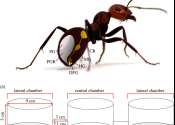Asbestos in playground mulch—how to avoid a repeat of this circular economy scandal
Asbestos has been found in mulch used for playgrounds, schools, parks and gardens across Sydney and Melbourne. Local communities naturally fear for the health of their loved ones. Exposure to asbestos is a serious health ...









